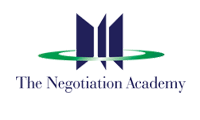| A Creative Model for Team Negotiations |  |
| Increase the creativity of your negotiation team.Develop the professional resources of your business by focussing on skills within your organisa tion. |
“Choose a job you love, and you will never have to work a day in your life” - Confucius
Ever asked yourself this question: “Is this what I really want to do with my life…is this my dream job?” Have you ever been bothered by individuals who speak about their careers excitedly and with a great deal of animation? Or, do you happen to be one of these fortunate people who loves your chosen career? Regardless of your situation, we would like to explore just how these auspicious few got it just right, and how you can also find the joy of selecting and reveling in the career that’s right for you. As a negotiations company, we will be utlisizing these discoveries to learn precisely how you, your team, and yes – your organisation – can become that much more successful in your negotiations.
Is success primarily a consequence of hard work? Am I obtaining the best negotiating performances from my team or employees? Are these the same specific questions you’ve already asked yourself? Before we begin to ‘knock’ ourselves or our co-workers, it would be better if we start by asking a much more revealing question:
‘Am I doing what I’m best at?'
We all know that our brain conceals many enigmas. Our brain is the place that gives rise to our preferences. Our preferences prompt us to develop and perform uniquely from each other. These preferences moderate our behaviour, our effectiveness and efficiency in the workplace. They virtually affect every area of our activity. In the late 1970s, Ned Herrmann created a model. In this model, he divided the brain into four quadrants:

Most likely, you already have heard of the the differences between your left and right brain hemispheres. N. Hermann created a tool that provides an additional but useful set of distinctions. It is called Herrmann's Brain Dominance Instrument (HBDI) and is revolutionising today's global marketplace. Herrmann discovered that each quadrant of the brain is responsible for individual and distinct activities. By comprehending how your preferences fashion the decisions you make can result in a significant enhancement in both your personal and professional lives. Organisations can employ talent far more effectively by acquiring a more profound insight into which particular environments and challenges that will result in a team flourishing as opposed to fighting.
One individual can be brilliant in one job, whilst hopelessly incompetent at another. Using the HBDI profile we can determine not only our brain’s strengths and weaknesses, but also those of our teams’, our departments’, and even our organisation in its entirety! In this manner HBDI is arising as the source in becoming a more competitive and dynamic organisation. Our primary interest rests in using this knowledge within the negotiation framework. Now, let’s focus our attention on exactly how you can leverage your negotiations success for professional and business benefits, beginning right now.
When your negotiations normally include 2 or more individuals, then you will have to consider not only the needs and objectives of all the parties but also their preferences. You may be acting as a representative of your employer, your department and other departments, stakeholders who are not present (suppliers, shareholders, communities) or the entire company itself (not forgetting yourself!). If this applies to you, then this is normally also equally true for the other party. HBDI may be an especially useful tool to assist you in forming your negotiating team, and help you plan how to best address their needs.
Let's speak for a moment about one single dimension of the Herrmann model. Some of us focus mainly on substantive outcome of our negotiations (profit) while others tend to value business relationships more. Naturally, the ideal course is to manage both the relationship and substantive goals on an equal footing. The test that confronts many organisations pertains to the forming of a uniform team of negotiators who are primarily focused on one or the other. Let's look at an example – our clients in the engineering, chemical and petrochemical sectors mostly recruit engineers. Engineers normally have an inclination to favour the objective facts. Engineers have been known to place relatively less emphasis and energy on building relationships (apologies if you are an engineer, our strengths chiefly arise from our preferences).
Another unpleasant by-product is the stale “group-think”, which can cause creativity to suffer. It would be more advantageous to infuse a beneficial amount of relationship building and creativity into the team. This would add balance as it would address the blind spots that would otherwise suffer in negotiation preparations.
The Whole Brain Organisation
Different occupations require unique mental requirements. The ideal remedy for the company and the employee is to achieve the closest alignment that can be attained between the employee and their work. Productivity problems normally result from a mismatch between people’s mental preferences and the mental prerequisites of the work they perform. An suitable matching increases employees’ chances to be “smart”, productive and satisfied. The Whole Brain Method offers an enhanced means to marketing, sales, advertising, managing and many other areas of business. Another point to remember is that it can also help your communications and your negotiations in a means that will trigger your listener to become more receptive to your messages. This will result in less resistance and a more persuasive presentation, and this in turn all translates into more agreements being closed on your terms.
Whole Brain Creativity
“Imagination is more important than knowledge. Knowledge is limited. Imagination encircles the world."
- Albert Einstein
The brain is the core of creativity. Creative thought is the culmination of specialised mental thought processes. Effective synergy within all the quadrants contributes vigorously to the creative process. Maximum creativity can be achieved by creating a team in which all members represent dominant thinking preferences that are different in nature. Let’s examine the Mental Activities and Thinking Modes:
Quadrants:
|
A |
B |
C |
D |
|
Problem Identification |
Planning |
Interpersonal |
Ideating |
|
Analysing |
Implementing |
Sensing People |
Designing |
|
Problem Solving |
Organising |
Expressing |
Strategizing |
|
Diagnosing |
Timing |
Feeling |
Integrating |
|
Logic |
Establishing Processes |
Social |
Innovating |
As an alternative to forming a team where all participants will be able to fully comprehend only several dimensions of a complicated or complex issue, effective use of the HBDI offers the possibility of injecting creativity into all areas of business. Instead of stifling creativity, we have an opportunity to stimulate, support and reward it.
Whole Brain Personal Development
Our creative potential can be cultivated or lost by surrendering over either an interesting, stimulating job, or a boring, non-creative one. A few companies disregard the creative abilities of their own employees and spend a vast amount in looking for solutions and advice with outside consultant organisations. HBDI can attest its relevance by acting as a compass and show you the direction of your preferred professional career path. By knowing where to focus on while training your people will allow your organisation to develop leaders with minimum investment.
Ponder the often landmine riddled arena of recruiting talent. Everyone of us knows how costly it is to train and prepare individuals for their professional role. Should the expense be invested wisely, the return can multiply the original investment several times over. As one of our services consists of training, we would be saying this, wouldn’t we? So if you question this system, just ask us to back this claim up with reputable client testimonials. Question us on just how much value recruiting the right negotiators can affect your company’s bottom line.
Regrettably, it is true that people and companies often change only when given a large enough reason to do so such as when they’re pressured by external circumstance. It is frequently a challenge to find this reason in the course of everyday business negotiations. You might be making a huge profit; your negotiations always work out; your teams work harmoniously in preparations. The client, and clients / suppliers invite you to return again and again while enthusiastically praising your novel ideas. If this ideal negotiating situation is yours, please get in touch with us. We would love to investigate whether you are unknowingly already employing the Herrmann Model for added business value. However, if you are not, but you can foresee better negotiations, then it would our pleasure to discuss (without obligation) what specific benefits the HBDI can provide to you and your organisation.
Back to Negotiation Articles
We welcome the republication of this page's contents in part or full - we just ask that you include a clean link back to this site, to our www.negotiationtraining.com.au/training/ page.
|
Reader Comments
Average Reader Rating:
share your comment |
|
|
No comments |






Reader Comments
Average Rating:
Total Comments: 0